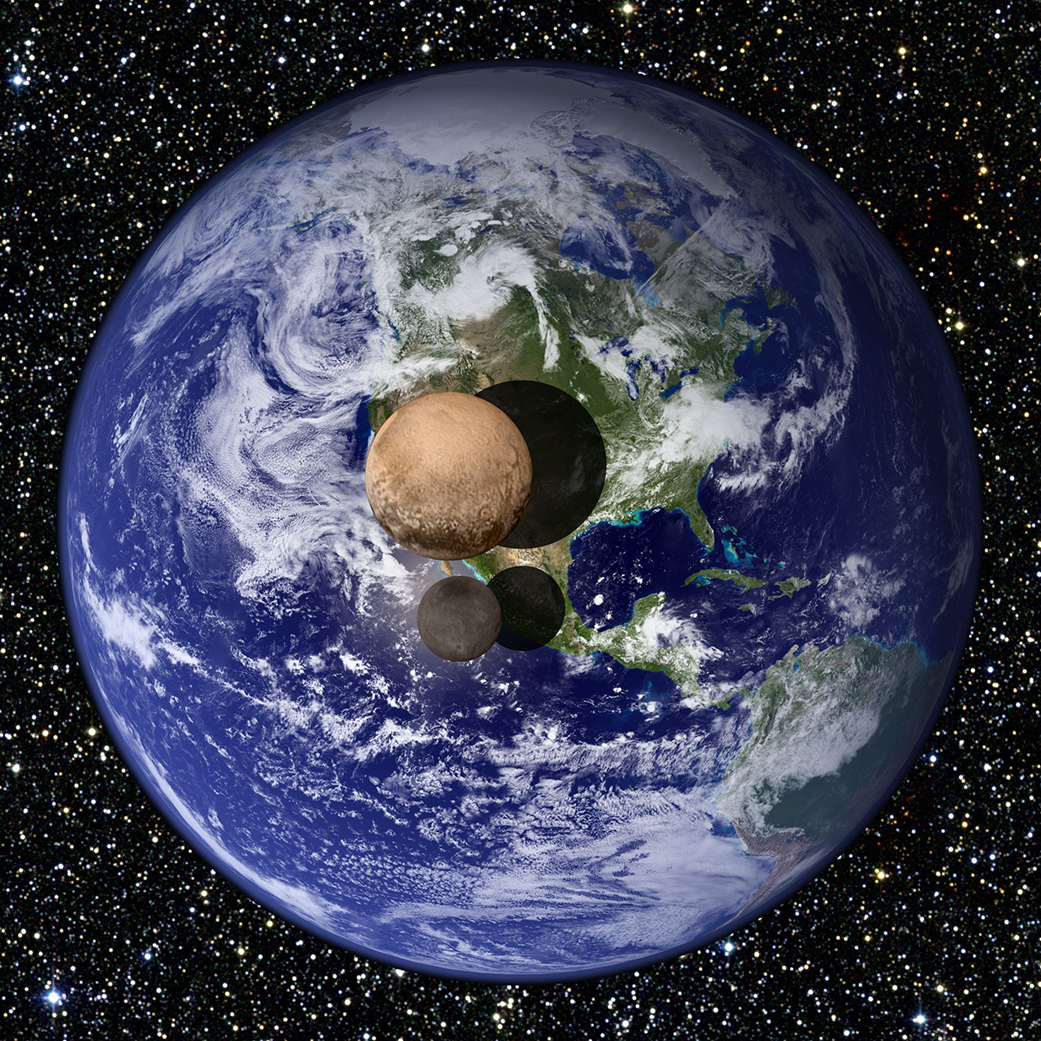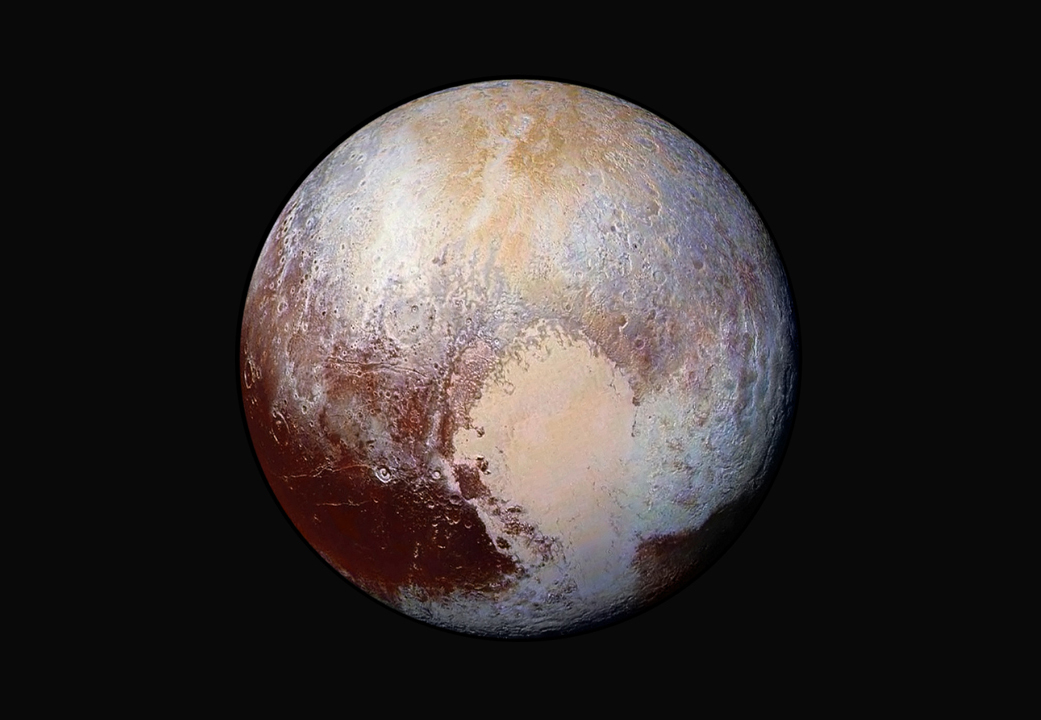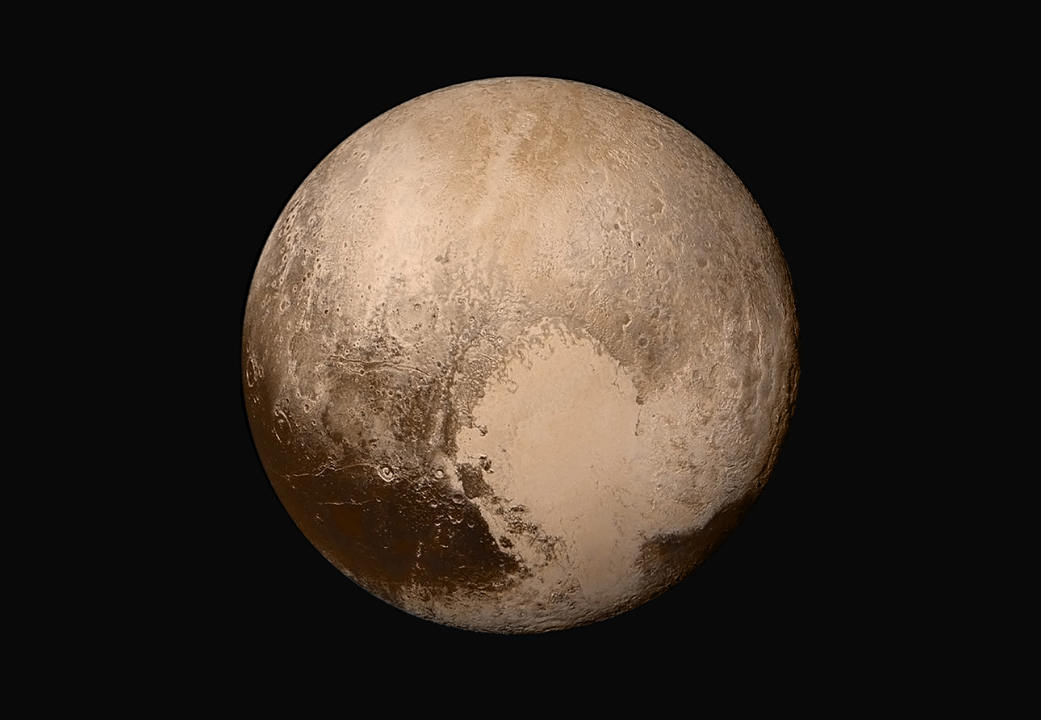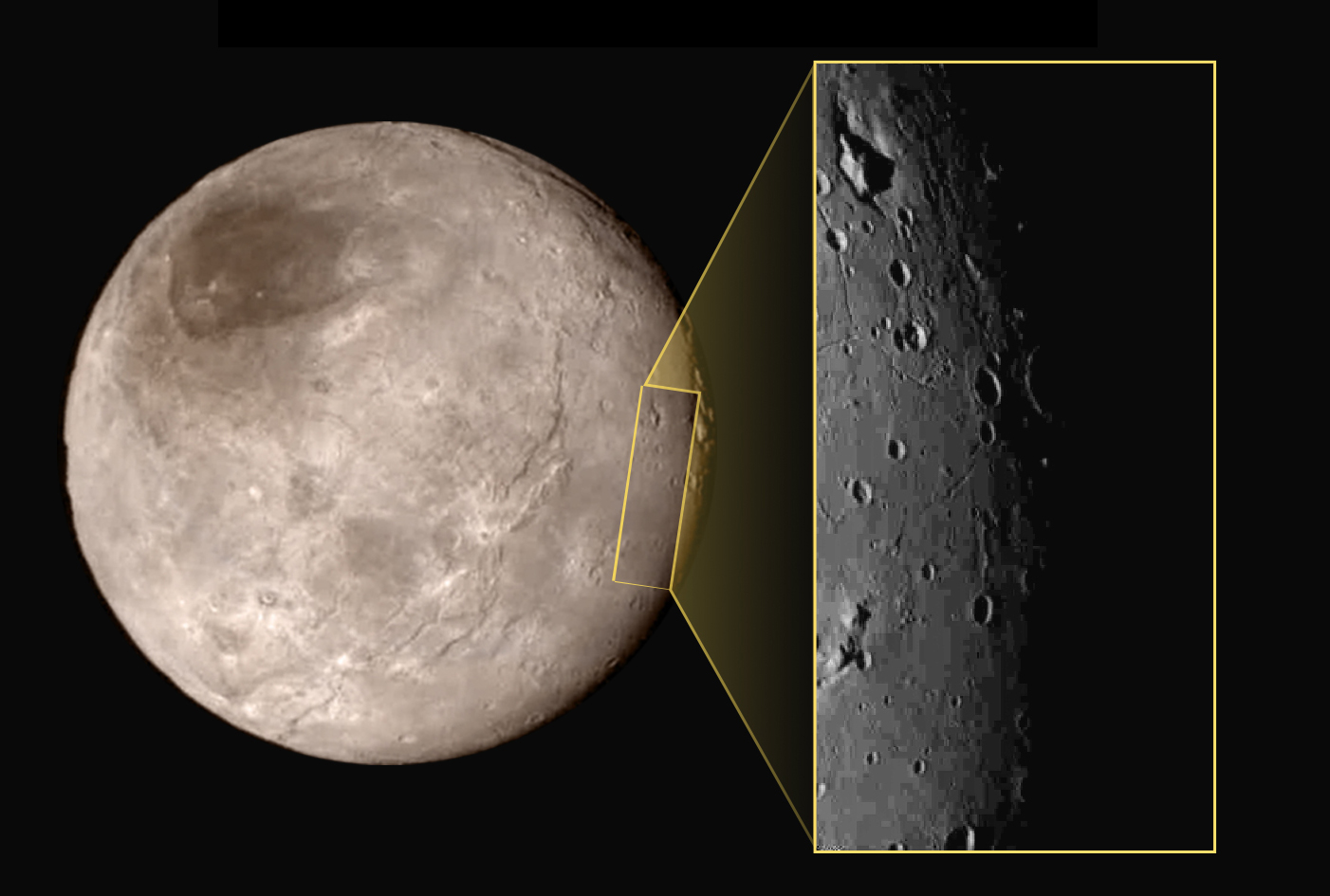This graphic presents a view of Pluto and Charon as they would appear if placed slightly above Earth’s surface and viewed from a great distance. Recent measurements obtained by New Horizons indicate that Pluto has a diameter of 2370 km, 18.5% that of Earth’s, while Charon has a diameter of 1208 km, 9.5% that of Earth’s.

New Horizons scientists use enhanced color images to detect differences in the composition and texture of Pluto’s surface. When close-up images are combined with color data from the Ralph instrument, it paints a new and surprising portrait of the dwarf planet. The “heart of the heart,” Sputnik Planum, is suggestive of a source region of ices. The two bluish-white “lobes” that extend to the southwest and northeast of the “heart” may represent exotic ices being transported away from Sputnik Planum.
 Pluto in False Colour - Image Credit: NASA/JHUAPL/SwRI
Pluto in False Colour - Image Credit: NASA/JHUAPL/SwRI
Four images from New Horizons’ Long Range Reconnaissance Imager (LORRI) were combined with color data from the Ralph instrument to create this enhanced color global view. The images, taken when the spacecraft was 280,000 miles (450,000 kilometers) away, show features as small as 1.4 miles (2.2 kilometers).
 Pluto Global Mosaic in True Colour - Image Credit: NASA/JHUAPL/SwRI
Pluto Global Mosaic in True Colour - Image Credit: NASA/JHUAPL/SwRI
Four images from New Horizons’ Long Range Reconnaissance Imager (LORRI) were combined with color data from the Ralph instrument to create this sharper global view of Pluto. (The lower right edge of Pluto in this view currently lacks high-resolution color coverage.) The images, taken when the spacecraft was 280,000 miles (450,000 kilometers) away from Pluto, show features as small as 1.4 miles (2.2 kilometers). That’s twice the resolution of the single-image view captured on July 13 and revealed at the approximate time of New Horizons’ July 14 closest approach.
 Pluto Mountain Range - Image Credit: NASA/JHUAPL/SwRI
Pluto Mountain Range - Image Credit: NASA/JHUAPL/SwRI
A newly discovered mountain range lies near the southwestern margin of Pluto’s Tombaugh Region, situated between bright, icy plains and dark, heavily-cratered terrain. This image was acquired by New Horizons’ Long Range Reconnaissance Imager (LORRI) on July 14, 2015 from a distance of 48,000 miles (77,000 kilometers) and sent back to Earth on July 20. Features as small as a half-mile (1 kilometer) across are visible.
Pluto’s icy mountains have company. NASA’s New Horizons mission has discovered a new, apparently less lofty mountain range on the lower-left edge of Pluto’s best known feature, the bright, heart-shaped region named Tombaugh Regio (Tombaugh Region).
These newly-discovered frozen peaks are estimated to be one-half mile to one mile (1-1.5 kilometers) high, about the same height as the United States’ Appalachian Mountains. The Norgay Montes (Norgay Mountains) discovered by New Horizons on July 15 more closely approximate the height of the taller Rocky Mountains.
The new range is just west of the region within Pluto’s heart called Sputnik Planum (Sputnik Plain). The peaks lie some 68 miles (110 kilometers) northwest of Norgay Montes.
 New Horizons Close-Up of Charon’s ‘Mountain in a Moat’ - Image Credit: NASA/JHUAPL/SwRI
New Horizons Close-Up of Charon’s ‘Mountain in a Moat’ - Image Credit: NASA/JHUAPL/SwRI
This new image of an area on Pluto’s largest moon Charon has a captivating feature—a depression with a peak in the middle, shown here in the upper left corner of the inset.
The image shows an area approximately 240 miles (390 kilometers) from top to bottom, including few visible craters. “The most intriguing feature is a large mountain sitting in a moat,” said Jeff Moore with NASA’s Ames Research Center, Moffett Field, California, who leads New Horizons’ Geology, Geophysics and Imaging team. “This is a feature that has geologists stunned and stumped.”
This image gives a preview of what the surface of this large moon will look like in future close-ups from NASA’s New Horizons spacecraft. This image is heavily compressed; sharper versions are anticipated when the full-fidelity data from New Horizons’ Long Range Reconnaissance Imager (LORRI) are returned to Earth.
The rectangle superimposed on the global view of Charon shows the approximate location of this close-up view.